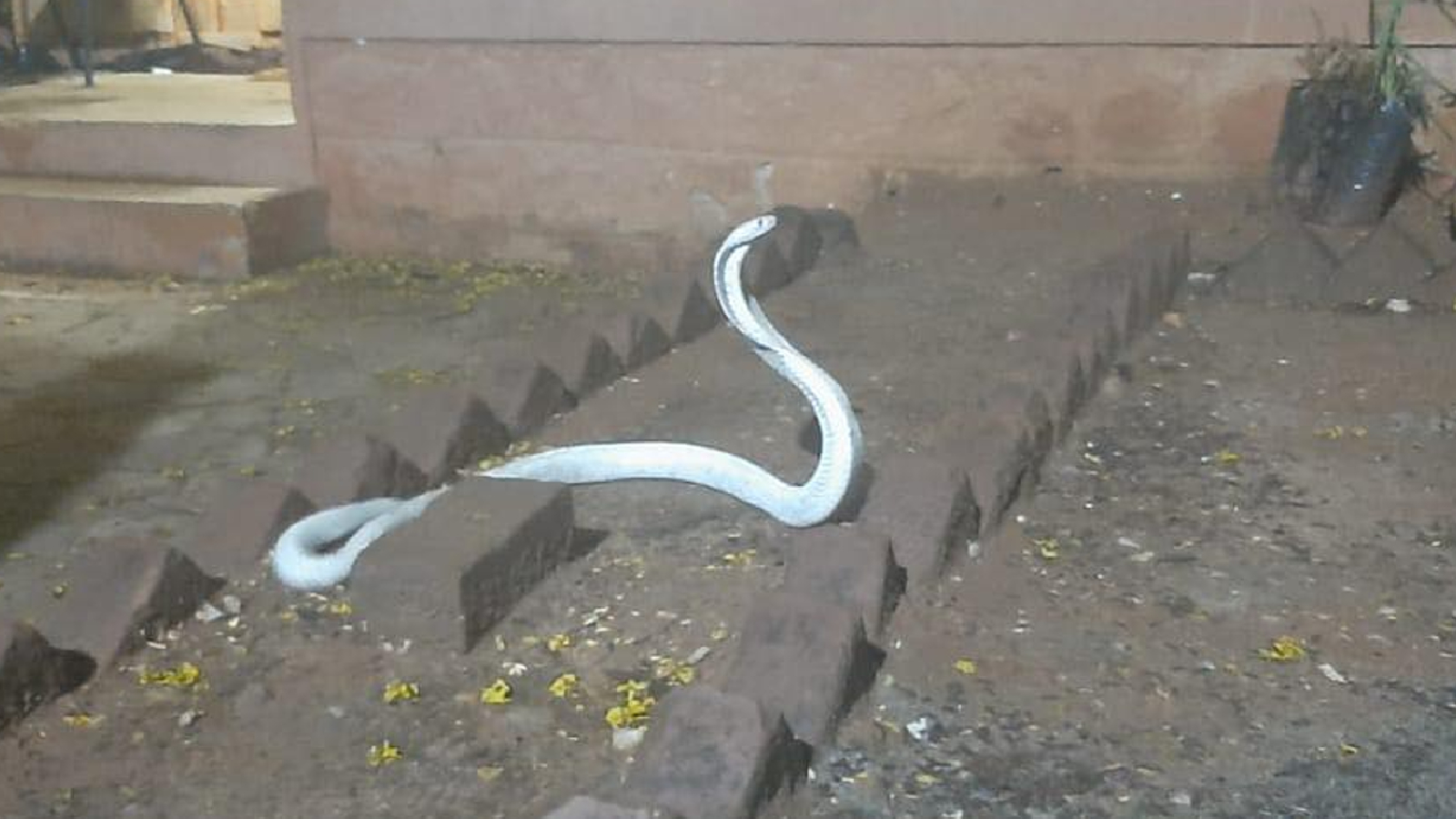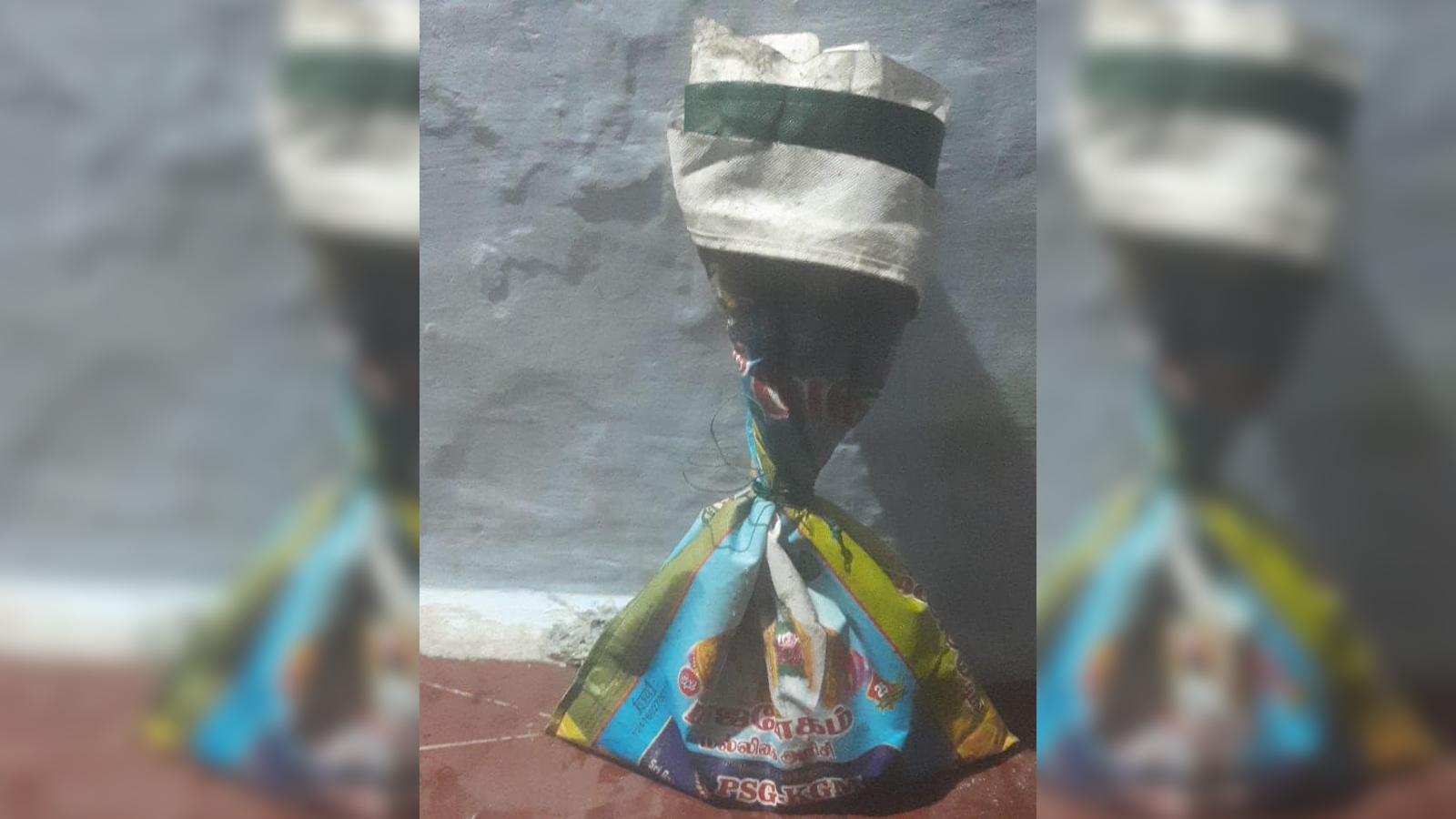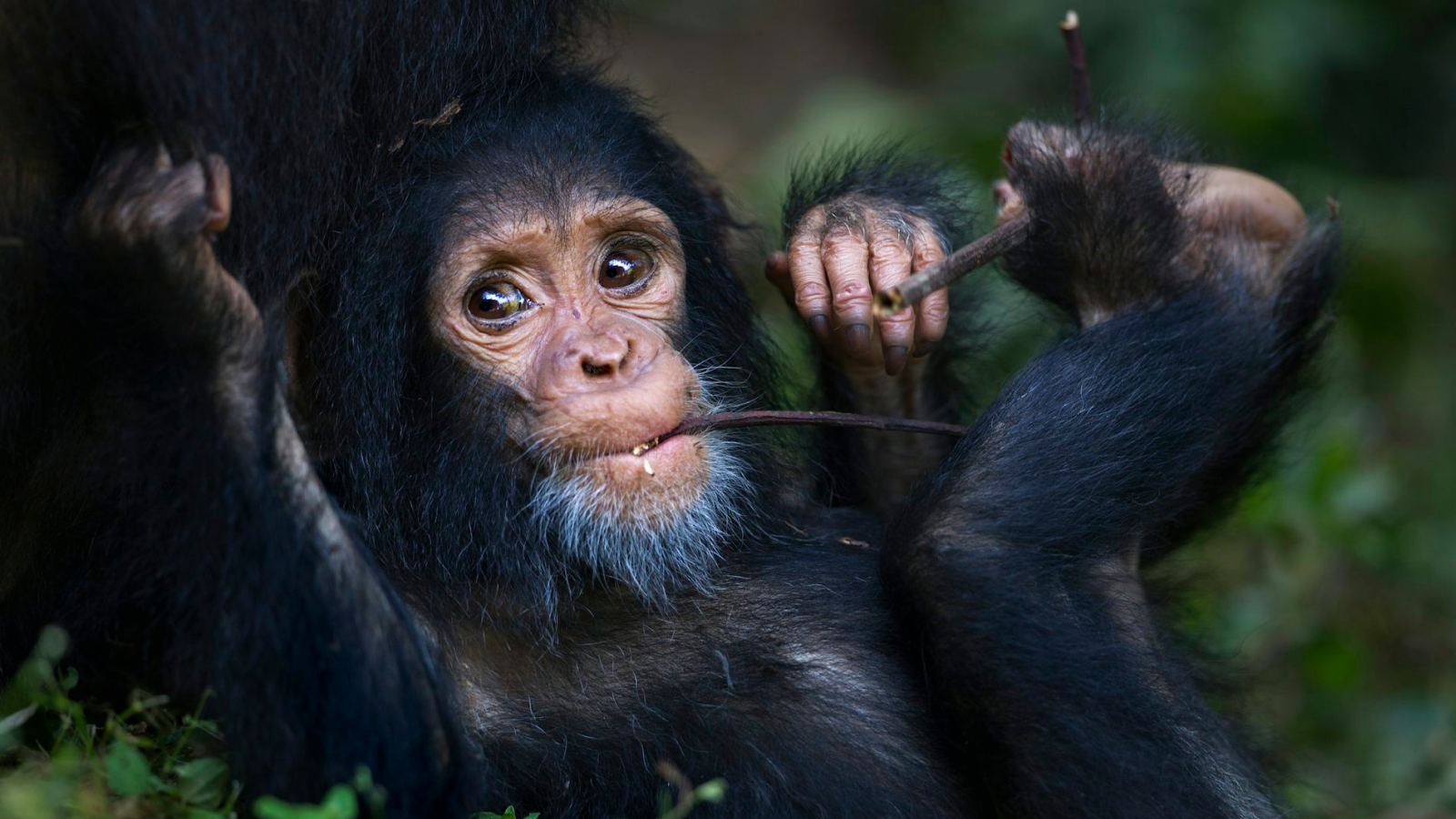Rare and deadly albino cobra slithers into house during intense rainstorm
The white snake was safely captured by wildlife experts in India before being released back into the wild.
An extremely rare and potentially deadly albino cobra had to be removed from a house in India after the white snake slithered in during a severe rainstorm.
Neighbors spotted the pale cobra climbing out of fast flowing water on the ground and into a passageway beside the house in Coimbatore in Tamil Nadu state, southern India, on May 3. Experts from the Wildlife and Nature Conservation Trust (WNCT) later arrived to safely capture the snake, which was then released into the wild.
The 5-foot-long (1.5 meters) snake was identified as an albino Indian cobra (Naja naja), WNCT representatives wrote on Facebook. The species, which are also known as the spectacled cobra, is considered one of the "big four" snake species that are responsible for the most snakebite cases in India.
Albinism is a genetic condition that prevents animals from producing the pigment melanin, which gives color to their skin, fur, feathers or scales. It is recessive, meaning both parents must possess the gene and pass it onto their offspring. Albino animals also lack pigment in their irises, meaning that they have pink or red eyes, which results in reduced vision or total blindness; moreover, their skin is highly susceptible to sunburns.
Related: 7 strange snake stories from 2022
For most animals, albinism can be a death sentence. Their white color makes them stand out to predators, meaning many die as juveniles in the wild. But the Coimbatore cobra's size suggests it is fully grown and has not been overly affected by its condition.
However, albinism isn't always a disadvantage, at least for some snakes. In a study published in February 2022 in the journal Zoology, researchers used fake snakes to test whether white or albino snakes were at a higher risk of predation from birds than normal colored individuals. The results suggested that albinism did not increase the rate of predation, likely because their discoloration confused the birds, which use the snakes' skin patterns to identify them as prey.
Get the world’s most fascinating discoveries delivered straight to your inbox.
Safely capturing the snake was important because the species are known to be highly venomous. "Their venom can cause paralysis and even death if not treated promptly," WNCT representatives wrote. "It is crucial to handle these snakes with great care and expertise, as any mistake can lead to severe consequences."
Between 81,000 and 138,000 deaths occur in India each year due to snakebites, according to the World Health Organization.
Cobras can also deliver dry bites, which do not contain any venom. In November 2022, an 8-year-old boy in India received a dry bite from an unidentified species of cobra before biting the snake in retaliation and killing it.

Harry is a U.K.-based senior staff writer at Live Science. He studied marine biology at the University of Exeter before training to become a journalist. He covers a wide range of topics including space exploration, planetary science, space weather, climate change, animal behavior and paleontology. His recent work on the solar maximum won "best space submission" at the 2024 Aerospace Media Awards and was shortlisted in the "top scoop" category at the NCTJ Awards for Excellence in 2023. He also writes Live Science's weekly Earth from space series.




